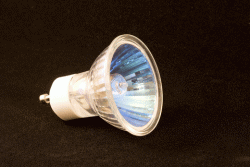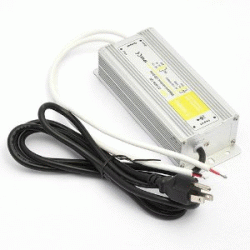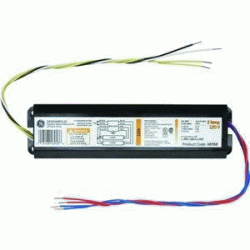Low-Voltage Cable Lighting: Choosing Transformers and Fixtures
Low-voltage cable lighting allows you to create highly-focused accent lighting for your home.
Low-voltage cable lighting is an excellent source of accent lighting for your home, especially in spaces where the ceilings are either concrete or especially difficult to install lighting on. This is because low-voltage lighting provides a much more focused beam of light that can be easily shone onto areas in the room that you want to have stand out to your visitors.
The reason for using low-voltage cable lighting (or any low-voltage lighting) is that the voltage in your home, usually 120 volts, is actually pretty terrible for lighting. Such a level of electricity is ideal for running major appliances like washing machines or refrigerators, but not delicate filaments.
This amount of voltage actually overwhelms light bulbs, overtaxing their filaments and causing problems in a number of ways. First, it makes your bulbs burn out faster, which costs money. Second (and more importantly for cable lighting), the filament releases a much more diffuse light that is more difficult to direct. Low-voltage lighting is very easily controlled, providing you with the ability to more precisely shape the light in your home.
Voltage Options
In general, low-voltage cable lighting comes in two types, 12-volt and 24-volt lighting. Despite these two forms of lighting being fairly similar, there are some differences that are significant enough that you need to consider them when deciding between the different voltages.

12-volt lights are very focused, but not especially bright.
24-volt lighting is something of a compromise. The lighting is much more precise than 120-volt lighting, but not quite as precise as 12-volt lighting. However, it is also noticeably brighter than the tiny 12-volt bulbs. This means that it is an excellent choice when you need directed accent lighting, but need it to be fairly bright.
Whichever voltage you choose, be sure never to mix voltages. Mixing voltages can be a fire hazard, and will almost automatically blow out any too-low-voltage bulbs. Bulbs will say clearly on their packaging what voltage they are designed for.
Transformer Options
All low-voltage lighting (or anything that requires low voltages) requires what is called a transformer. A transformer converts the electric current from the higher voltage to the lower voltage needed for your lighting. While some low-voltage light fixtures have their own transformers, low-voltage cable lighting instead puts its transformers at the ends of the cables.

Transformers, like this one available at Amazon, are usually considered unsightly and kept out of sight.
Surface-mount transformers are actually placed outside of your wall rather than within it. This makes them easier to use. They can be wired either from inside or outside of the wall and require less installation. They also do not require that you use partially insulated cable. Their downside is that you may not like their appearance, forcing you to hide them or even move your cables to places where the transformer can be more easily hidden.
There are two types of transformers that you can choose from. The most common type of transformer is the magnetic transformer. This changes voltage by emitting an electromagnetic field. The problem with these transformers is that they emit a very slight hum that you might notice, depending on how close you are to the transformer. If you use a magnetic transformer, then you should consider using a remote-mount transformer, so that the wall absorbs most of the hum.
The other option is the use of an electronic transformer. Electronic transformers are quieter than magnetic transformers, because they don’t actually use physical movement to change the voltage. However, electronic transformers are more expensive. If you cannot hear your magnetic remote-mount transformer, you probably don’t need an electronic transformer, but if you can hear it or you plan to use surface-mount transformers, you may want to consider an electronic one.
Fluorescent Bulb and Dimmer Compatibility
If you are using fluorescent low-voltage cable lighting, then you will need to be sure that the ballast in the bulbs and the transformers are compatible. Fluorescent bulbs use ballasts to ensure that the bulbs do not flicker.

Fluorescent magnetic ballasts, like this one available at Amazon, will hum if not used with a magnetic transformer.
Dimmers and other forms of light control systems, like fluorescent bulbs, also must be made compatible with your transformers. Dimmers aren’t really magnetic or electronic per se, but they are always made to be compatible with one or the other. As a result, you should take care that any dimmers that you purchase for your low-voltage cable lighting are compatible. If you do not, magnetic parts will start to hum loudly and the dimmers may simply not work or work erratically.
Putting It All Together
Low-voltage cable lighting provides some of the best accent lighting for your home, especially in ceilings that make installation of other fixtures difficult. This is because they provide highly focused light that you can direct as you wish.
However, there are still a number of things to consider when purchasing low-voltage cable lighting:
- Whether to purchase 12-volt or 24-volt lighting: 12 volt is more precise, but 24 volt is brighter. Systems should not be mixed.
- Whether to use remote or surface-mount transformers: remotes can be hidden more easily, but are more difficult to install.
- Whether to use electronic or magnetic transformers: electronic are more expensive, but magnetic can hum. They should not be mixed.
Once these decisions have been made, you’ll be able to choose the best available low-voltage cable lighting.
Back from Low-Voltage Cable Lighting to Ceiling Lighting Fixtures